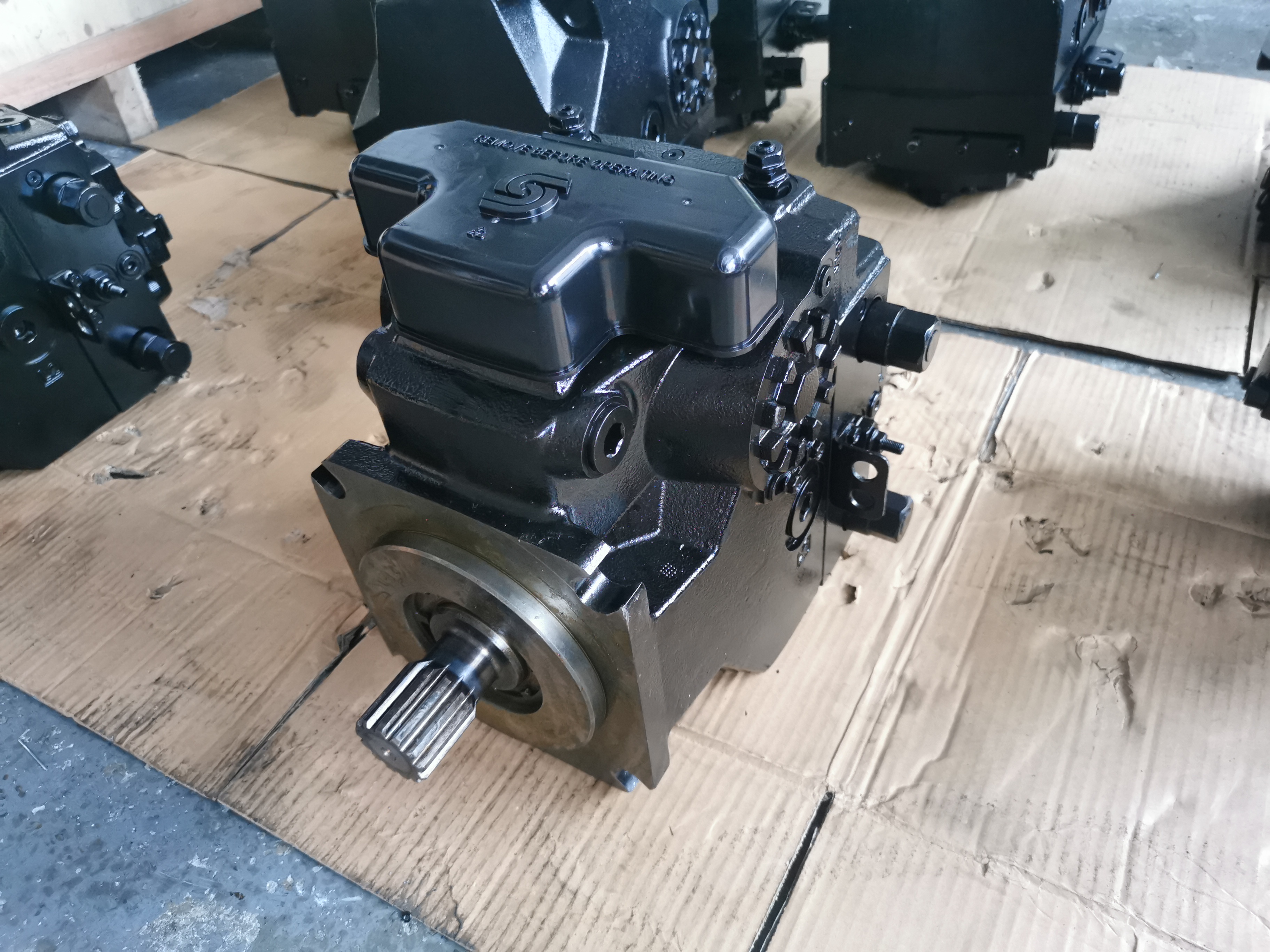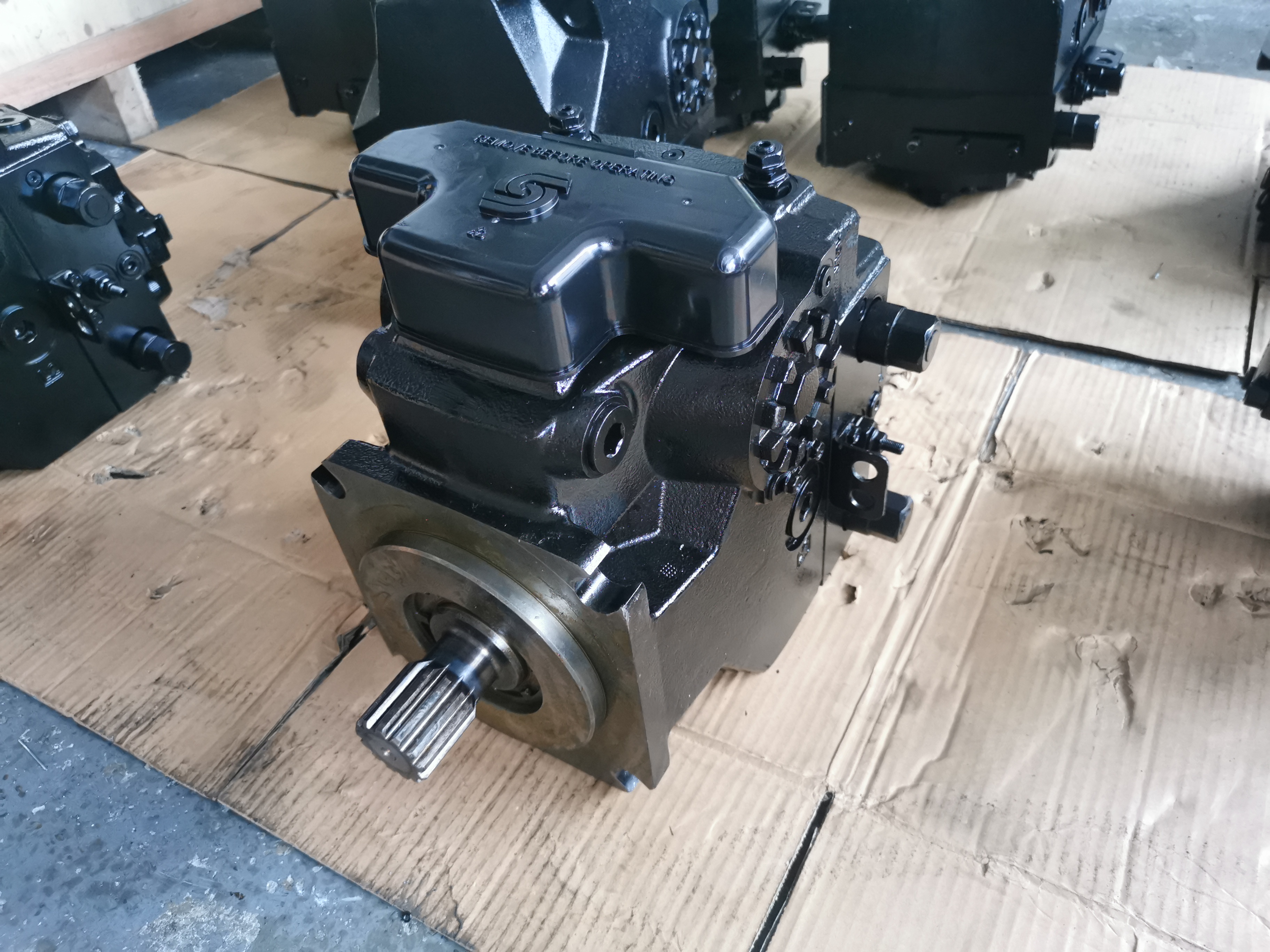Emulsification Problem Solving Key Strategies and Components of Piston Pump Systems
Emulsification is the process of mixing two immiscible liquids, such as oil and water, to form an emulsified liquid. In the context of plunger pumps, preventing oil emulsification is critical to maintaining pump efficiency and performance.
There are various strategies and components that can be incorporated into plunger pump systems to minimize or prevent oil emulsification. Here are some common methods:
1. Ventilation filter:
Installing a breather filter on the pump reservoir or hydraulic system can help prevent moisture and contaminants from entering. These filters often contain desiccant material to absorb moisture and prevent water from entering the system.
2. Oil separator:
An oil separator is a device in a hydraulic system that separates oil from water. They can be installed in hydraulic tanks or pump systems to ensure water and oil remain separate.
3. Proper fluid maintenance:
Regular monitoring and maintenance of hydraulic oil is critical. This includes checking and replacing the fluid as needed and ensuring it meets the pump manufacturer's recommended specifications.
4. Cooling system:
Managing the temperature of hydraulic oil is critical. Too much heat can cause emulsification. Cooling systems, such as heat exchangers or radiators, can help maintain optimal temperatures.
5. System design:
The overall design of a hydraulic system, including the positioning of components and the layout of pipes and hoses, affects the potential for oil emulsification. Proper design can minimize the chance of water entering the system.
H1-P-100-R-A-A-A5-C1-N-F6-H-G9-H6-K-42-K-42-M-L-24-PN-NNN-NNN H1P100RAAA5C1NF6HG9H6K42K42ML24PNNNNNNN
H1-P-100-R-A-A-A5-C1-N-F6-H-F1-H6-L-15-L-15-D-L-24-PN-NNN-NNN H1P100RAAA5C1NF6HF1H6L15L15DL24PNNNNNNN
H1-P-100-R-A-A-A5-C1-N-F4-H-G9-H6-L-42-L-42-D-M-28-PN-NNN-NNN H1P100RAAA5C1NF4HG9H6L42L42DM28PNNNNNNN
H1-P-100-R-A-A-A5-C1-N-F4-H-G9-H6-L-38-L-38-D-M-24-PN-NNN-NNN H1P100RAAA5C1NF4HG9H6L38L38DM24PNNNNNNN
H1-P-100-R-A-A-A5-C1-N-F4-H-G9-H6-L-30-L-30-D-M-24-PN-NNN-NNN H1P100RAAA5C1NF4HG9H6L30L30DM24PNNNNNNN
H1-P-100-R-A-A-A5-C1-N-D6-H-G9-H3-L-35-L-35-D-L-24-PN-NNN-NNN H1P100RAAA5C1ND6HG9H3L35L35DL24PNNNNNNN
H1-P-100-R-A-A-A5-C1-N-D6-H-G9-H2-L-43-L-42-M-L-24-PN-NNN-NNN H1P100RAAA5C1ND6HG9H2L43L42ML24PNNNNNNN
H1-P-100-R-A-A-A5-C1-N-D6-H-G9-H2-L-42-L-42-M-L-24-PN-NNN-NNN H1P100RAAA5C1ND6HG9H2L42L42ML24PNNNNNNN
H1-P-100-R-A-A-A5-C1-N-D6-H-G1-H2-L-28-L-28-M-L-28-PN-NNN-NNN H1P100RAAA5C1ND6HG1H2L28L28ML28PNNNNNNN
H1-P-100-R-A-A-A5-C1-N-D3-H-G9-H5-L-40-L-40-M-M-24-PN-NNN-NNN H1P100RAAA5C1ND3HG9H5L40L40MM24PNNNNNNN
H1-P-100-R-A-A-A5-C1-N-D3-H-G1-H5-L-35-L-35-M-M-24-PN-NNN-NNN H1P100RAAA5C1ND3HG1H5L35L35MM24PNNNNNNN
H1-P-100-R-A-A-A5-C1-N-D3-H-G1-H2-L-35-L-35-M-M-28-PN-NNN-NNN H1P100RAAA5C1ND3HG1H2L35L35MM28PNNNNNNN
H1-P-100-R-A-A-A5-C1-N-D3-H-G1-H2-L-35-L-35-D-M-28-PN-NNN-NNN H1P100RAAA5C1ND3HG1H2L35L35DM28PNNNNNNN
H1-P-100-R-A-A-A5-C1-B-F5-K-F1-H6-L-35-L-35-D-P-24-P4-NNN-NNN H1P100RAAA5C1BF5KF1H6L35L35DP24P4NNNNNN
H1-P-100-R-A-A-A5-C1-B-F5-H-G9-H6-L-30-L-30-M-P-22-PN-NNN-NNN H1P100RAAA5C1BF5HG9H6L30L30MP22PNNNNNNN
H1-P-100-R-A-A-A5-C1-B-F4-H-G3-H6-L-28-L-28-D-N-20-PN-NNN-NNN H1P100RAAA5C1BF4HG3H6L28L28DN20PNNNNNNN
H1-P-100-R-A-A-A5-C1-B-D8-H-G1-NN-L-30-L-30-M-P-22-PN-NNN-NNN H1P100RAAA5C1BD8HG1NNL30L30MP22PNNNNNNN
H1-P-100-R-A-A-A5-C1-B-D8-H-G1-H3-L-30-L-30-M-P-22-PN-NNN-NNN H1P100RAAA5C1BD8HG1H3L30L30MP22PNNNNNNN
H1-P-100-R-A-A-A5-C1-B-D6-H-G9-NN-L-42-L-15-D-L-24-PN-NNN-NNN H1P100RAAA5C1BD6HG9NNL42L15DL24PNNNNNNN
H1-P-100-R-A-A-A5-C1-B-D6-H-F1-H3-L-42-L-42-D-L-20-PN-NNN-NNN H1P100RAAA5C1BD6HF1H3L42L42DL20PNNNNNNN
6. Regular inspection:
Regular inspection of the pump system for leaks, damaged seals, or other issues that could allow water to enter the system is critical to preventing oil emulsification.
7. Seal maintenance:
Making sure seals and gaskets are in good condition can help prevent water from entering the pump system. Regularly inspect and replace damaged or worn seals.
8. Oil additives:
Some hydraulic fluids contain additives designed to improve their water resistance and reduce the potential for emulsification. Using high-quality hydraulic fluids with appropriate additives can help improve overall system performance.
9. Operational best practices:
Training operators on best practices, such as avoiding operating pumps in extremely wet conditions or preventing water from entering hydraulic tanks during maintenance, can help minimize the risk of emulsification.
10. Pollution control:
Implementing effective contamination control measures, such as the use of aerators, filters, and magnetic separators, can prevent particles from entering the system and causing emulsification.
11.Monitoring system:
Installing monitoring systems that can detect changes in fluid properties, such as increased water content, can provide early warning of potential problems, allowing for proactive maintenance.


12. Desiccant respirator:
Desiccant breathers are designed to absorb moisture from the air entering the hydraulic tank. These breathers often contain a desiccant (desiccant) that helps prevent water vapor from entering the system and causing the oil to emulsify.
13. Fluid contamination analysis:
Hydraulic oil samples are regularly analyzed for contamination, including water content. Fluid analysis can help identify problems before they become serious so corrective measures can be taken promptly.
14.Material compatibility:
Make sure that all materials that come into contact with the hydraulic fluid, such as seals and hoses, are compatible with the specific type of fluid being used. Incompatible materials can degrade over time, causing leakage and potential emulsification.
15.Hydraulic system design:
The overall design of the hydraulic system affects the potential for emulsification. Consider factors such as vent placement, use of baffles to separate air and liquid, and overall system layout to minimize the risk of water intrusion.
H1-P-100-R-A-A-A5-C1-B-D3-H-G9-H3-L-42-L-42-M-M-24-PN-NNN-NNN H1P100RAAA5C1BD3HG9H3L42L42MM24PNNNNNNN
H1-P-100-R-A-A-A5-C1-B-D3-H-G9-H2-L-38-L-38-M-M-24-PN-NNN-NNN H1P100RAAA5C1BD3HG9H2L38L38MM24PNNNNNNN
H1-P-100-R-A-A-A4-C3-N-F4-H-G9-H6-L-40-L-40-M-M-24-PN-NNN-NNN H1P100RAAA4C3NF4HG9H6L40L40MM24PNNNNNNN
H1-P-100-R-A-A-A4-C3-N-F4-H-G9-H6-L-23-L-23-M-M-24-PN-NNN-NNN H1P100RAAA4C3NF4HG9H6L23L23MM24PNNNNNNN
H1-P-100-R-A-A-A4-C3-N-F4-H-G9-H6-K-40-K-40-M-M-24-PN-NNN-NNN H1P100RAAA4C3NF4HG9H6K40K40MM24PNNNNNNN
H1-P-100-R-A-A-A4-C3-N-F4-H-G3-H6-L-42-L-42-M-M-24-PN-NNN-NNN H1P100RAAA4C3NF4HG3H6L42L42MM24PNNNNNNN
H1-P-100-R-A-A-A4-C3-N-D8-K-G1-NN-L-33-L-33-D-P-24-P4-NNN-NNN H1P100RAAA4C3ND8KG1NNL33L33DP24P4NNNNNN
H1-P-100-R-A-A-A4-C3-B-F5-H-F1-H6-L-38-L-18-M-P-28-PN-NNN-NNN H1P100RAAA4C3BF5HF1H6L38L18MP28PNNNNNNN
H1-P-100-R-A-A-A4-C3-B-D8-H-F1-H5-L-38-L-18-M-P-28-PN-NNN-NNN H1P100RAAA4C3BD8HF1H5L38L18MP28PNNNNNNN
H1-P-100-R-A-A-A4-C3-B-D3-H-G1-H3-L-42-L-42-M-M-24-PN-NNN-NNN H1P100RAAA4C3BD3HG1H3L42L42MM24PNNNNNNN
H1-P-100-R-A-A-A4-C2-N-F5-H-G9-H6-L-15-L-33-M-P-24-PN-NNN-NNN H1P100RAAA4C2NF5HG9H6L15L33MP24PNNNNNNN
H1-P-100-R-A-A-A4-C2-N-F5-H-G1-H6-L-30-L-30-M-P-22-PN-NNN-NNN H1P100RAAA4C2NF5HG1H6L30L30MP22PNNNNNNN
H1-P-100-R-A-A-A4-C2-N-F4-H-G9-H6-L-42-L-42-M-M-24-PN-NNN-NNN H1P100RAAA4C2NF4HG9H6L42L42MM24PNNNNNNN
H1-P-100-R-A-A-A4-C2-N-F4-H-G9-H6-L-42-L-42-M-M-20-PN-NNN-NNN H1P100RAAA4C2NF4HG9H6L42L42MM20PNNNNNNN
H1-P-100-R-A-A-A4-C2-N-F4-H-G9-H6-L-42-L-42-D-M-24-PN-NNN-NNN H1P100RAAA4C2NF4HG9H6L42L42DM24PNNNNNNN
H1-P-100-R-A-A-A4-C2-N-D8-H-G3-NN-L-35-L-35-D-P-24-PN-NNN-NNN H1P100RAAA4C2ND8HG3NNL35L35DP24PNNNNNNN
H1-P-100-R-A-A-A4-C2-N-D8-H-G1-H3-L-42-L-42-D-P-20-PN-NNN-NNN H1P100RAAA4C2ND8HG1H3L42L42DP20PNNNNNNN
H1-P-100-R-A-A-A4-C2-N-D8-H-G1-H3-L-40-L-40-M-P-24-PN-NNN-NNN H1P100RAAA4C2ND8HG1H3L40L40MP24PNNNNNNN
H1-P-100-R-A-A-A4-C2-N-D8-H-G1-H3-K-45-K-45-D-P-22-PN-NNN-NNN H1P100RAAA4C2ND8HG1H3K45K45DP22PNNNNNNN
H1-P-100-R-A-A-A4-C2-N-D8-H-G1-H2-L-42-L-42-D-P-26-PN-NNN-NNN H1P100RAAA4C2ND8HG1H2L42L42DP26PNNNNNNN
16. Rinse and clean regularly:
Regular flushing and cleaning of hydraulic systems can remove built-up contaminants, including water. This is especially important when a contamination event occurs or the system is exposed to harsh operating conditions.
17.Temperature control:
It is critical to keep the hydraulic oil within the recommended temperature range. Excessive heat will accelerate the degradation of the fluid and increase the potential for emulsification. Use cooling system as needed.
18. Training and Awareness:
Make sure those responsible for operating and maintaining hydraulic systems are well trained and understand the factors that can cause oil emulsification. This includes understanding the importance of proper fluid handling and system maintenance.
19.Environmental conditions:
Consider the environmental conditions in which the pump will operate. Where the pump is exposed to severe weather conditions, additional precautions may be necessary, such as an enclosed system or the use of weather-resistant materials.
20.Expert consultation:
If you continue to experience oil emulsification problems, consider consulting a hydraulic systems expert or an engineer who specializes in fluid dynamics. They can provide insights into specific challenges and recommend tailored solutions.
Remember, preventing oil emulsification is a holistic process that involves a combination of design considerations, regular maintenance, and proactive measures. Adhering to best practices and staying abreast of advances in hydraulic system technology can help improve the overall reliability of your plunger pump system.
This article is published by the official website of Baolilai Hydraulics, please contact the author and indicate the source for reprinting:https://www.baolilai-pump.cn/news/1152.html






